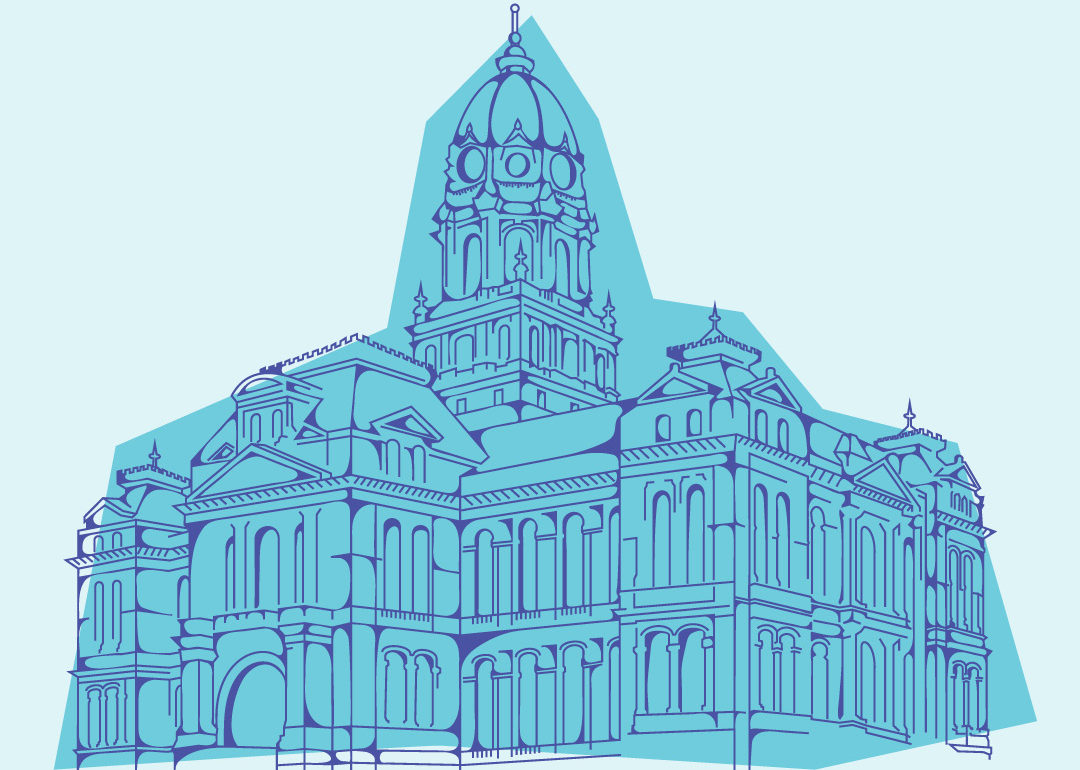Throughout the years, courts hear cases that have the ability to increase or decrease access to justice.
Across the world, it is estimated that 5 billion people in some way have unmet justice needs; some 1.5 billion of these people have unmet needs within the justice system or courts.
Judge Kimberly Dowling, of Delaware Circuit Court #2, says there has been a movement to self-represent in court.
“Either they don’t trust the system, they don’t trust lawyers, or they don’t have the money to hire an attorney,” Dowling says.
Limited scope representation, such as writing certain court documents, is a way for self-representing individuals to get an attorney’s help on certain areas of their case. Dowling says, “a lot of people don’t realize that’s an option for them and a lot of attorneys don’t market that way.”
Kevonna Tyler, Ball State’s assistant general counsel – public access officer & freedom of expression coordinator says, “[gatekeepers] only want certain kinds of folks, whatever the demographic might be, to take advantage of a particular service. And so other people might not know about it.”
Voter suppression has a great effect on the justice system. “It gives the idea that this is a representation of the community when in fact there’s a huge segment whose votes were suppressed,” says Tyler.
Federal judges are nominated by the president and confirmed by the Senate, which have typically been white men up until President Jimmy Carter in 1970, who appointed nearly 40% women, or racial or ethnic minorities, according to the Judicial Process in America by Robert Carp.
According to Carp, presidents will often pick judges based on political leaning; they will also use senatorial courtesy which is an unwritten rule that senators in the same party as the president can deny a judge in their home state.
The United States Supreme Court is often classified into eras based on the chief justice. Currently, it is The Roberts Court (2005-Present). This court expanded constitutional rights in its early years and in recent years has moved to be more conservative. Dobbs v. Jackson Women’s Health Organization and the subsequent overturning of Roe v. Wade is one example of the recent increase in conservatism within the court.
Out of the last 10 presidents, President Donald Trump’s Federal Judge Nominees have had 25% liberal leaning in the category of civil rights and liberties, according to The Judicial Process in America. Compared to other conservative presidents appointments this is about 7% lower. Throughout Trump’s time in office, his appointments were more conservative than past Republican presidents.
Over the Supreme Court’s history, it has swayed from one side to the other based on appointment. The Hughes Court (1930-1941) was home to “The Four Horsemen,” a conservative grouping, and “The Three Musketeers,” the liberal block from 1932 to 1937. During this period, President Franklin D. Roosevelt took office and created the reform “New Deal for Americans.” Many of the policy reforms would be considered unconstitutional due to the majority conservative block on
the court.
Cases similar to Obergefell v. Hodges, holding that same-sex couples have a fundamental right to marry under the Due Process and Equal Protection Clause of the 14th Amendment, show an increase in access. By allowing same-sex couples to marry it provides legal protection, including if the relationship were to end, access to litigate over property.
On the other hand, cases like U.S. v. Morrison held that Congress does not have the power to regulate gender-motivated crimes of violence under the Commerce Clause or Section 5 of the 14th Amendment, restricting Congress from creating criminal law, keeping it at the state level.
States widely vary in criminal law and associated punishments.
Tyler believes there are issues with access to justice due to lack of resources. Something that could increase access would be wraparound services, “wherever somebody is getting service, they provide information about other potential opportunities that might be helpful.”
This could look like someone going into a domestic violence shelter and providing them with housing services, the prosecutor’s office, and some information for a victim advocate.
Additional issues are created between counties of different sizes, says Tyler. “Resources are a bit smaller, sloppy, sometimes that creates a barrier because of what’s available in terms of the area you’re in.”
Access to justice can also involve physically getting to the location needed. This was a major reason for Marion County Court to change its location to the new Courthouse at the Community Justice Campus, says Tyler.
“Unless you’re a lawyer, unless you’ve gone to law school, unless you’re in the system, unless you work in it, it’s really difficult to have that in-depth knowledge about it,” says Dowling.
Disclaimer: This is not legal advice, only for educational purposes.



